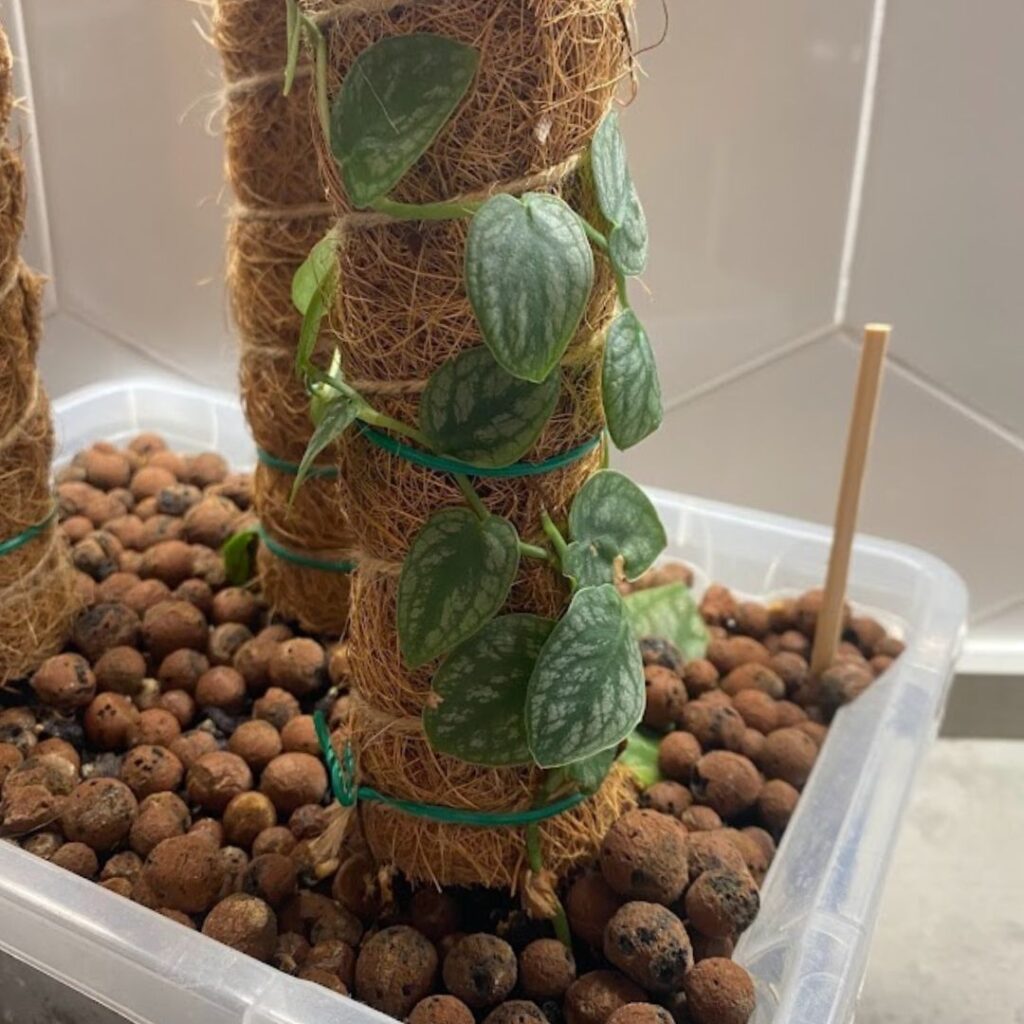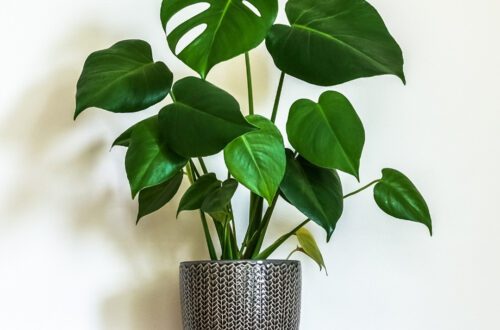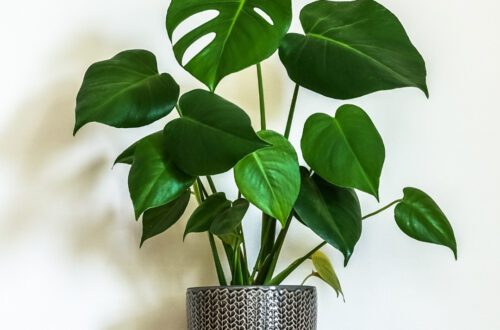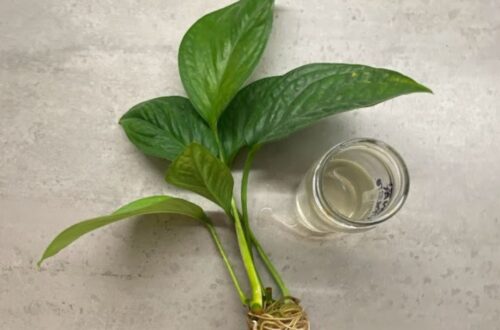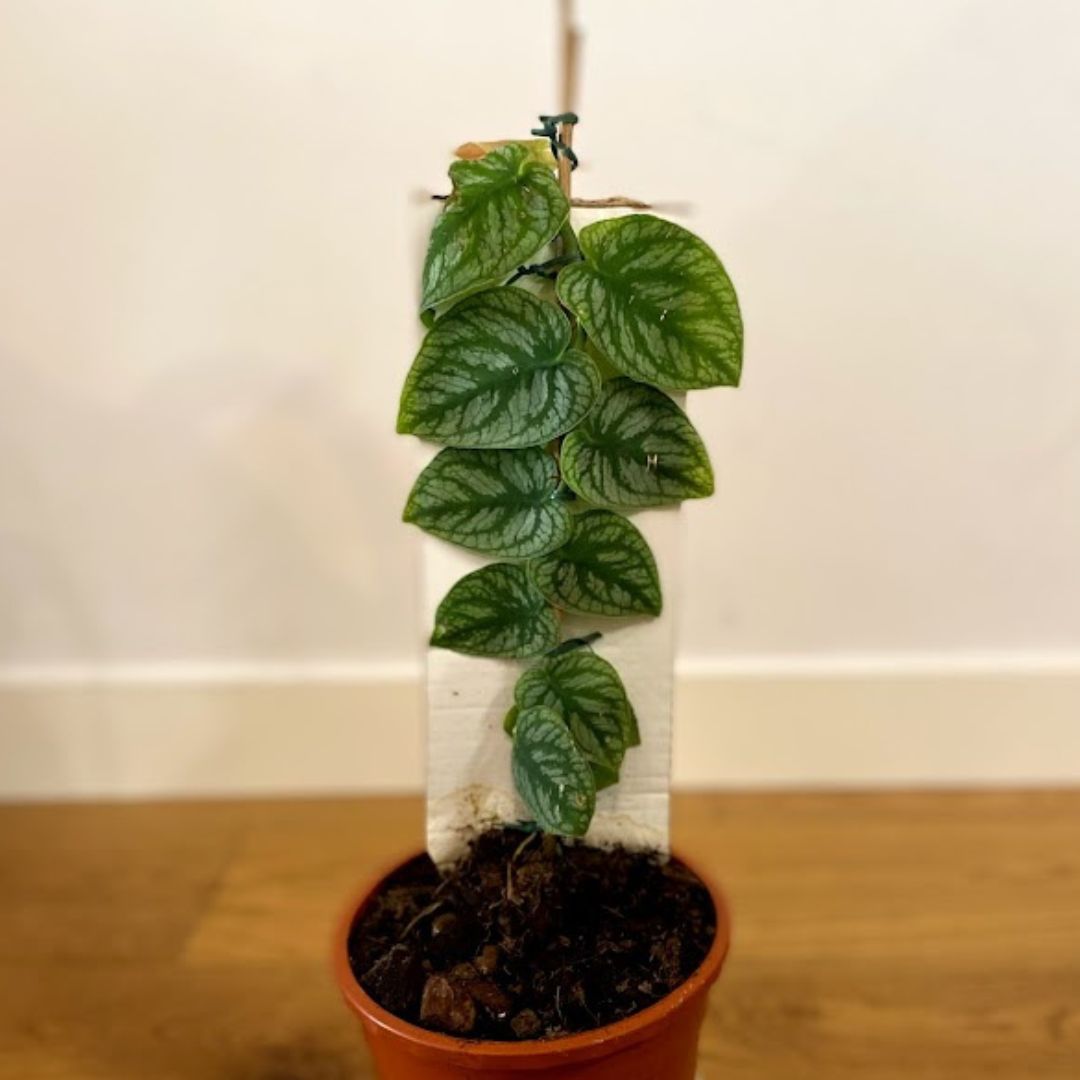
Monstera Dubia
Welcome to our guide to monstera dubia care. The new popular kid on the block, the monstera dubia, is relatively easy to look after for as long as you meet a few care requirements and treat it like an epiphyte, read on for more info…
Monstera Dubia Summary
| Light needs: | Bright indirect sunlight. |
| Watering needs: | Water when the top inch (2cms) or so of soil is dry. |
| Fertilizer: | Balanced feed once a month in summer. |
| Soil: | A well draining, rich soil with some added perlite. |
| Humidity: | 50%. |
| Temperature: | 18°C to 25°C (64-77°F). |
| Where to buy: | Try our list of Rare Plant Shops or Etsy. |
| Other names: | Shingle plant. |
| Common issues: | Drooping and root rot from over watering / lack of drainage. |
Introduction
The monstera dubia hails from the tropics of Central and South America. It is know for it’s variagated little leaves that climb up in a pattern, and it is often sold climbing up wood or a moss pole. What a lot of people do not realize is that when it reaches maturity it gets fenestrations (splits) in it’s leaves like a monstera deliciosa and then looks like an almost totally different plant.
The main thing you need to know about caring for this plant is that it needs good humidity and very, very well draining soil, they can grow on trees in the wild in just pieces of bark, so if they sit in normal wet soil it can lead to root quickly.
Read on for more on caring for this beauty…
See also: Monstera Propagation, Monstera Dubia Propagation, Monstera Dubia Mounting, Monstera Dubia Frame, Monstera Dubia Propagation In Moss, Monstera Deliciosa Care, Monstera Pinnatipartita Care.
Tip: we recommend Etsy for buying plants. Look for the best rated seller you can, and try to buy as close to your home as possible so the plant does not travel too far.
A note about affiliate links: when you buy a plant, pots, soil, or other goods through links on this article we sometimes earn a commission. It doesn’t cost you anything, but it really helps us out if you do use them. Thanks a lot! An example of this is if you buy a plant on Etsy using this link. Read our privacy policy for more information. Thanks again.
Monstera Dubia Light Needs
A monstera dubia needs a lot of bright indirect sunlight.
How Often to Water
Monstera dubias should be checked every week to see if they need watering but only water if the top inch (2cms) or so of soil is dry. If it is still wet then leave it another week, especially in winter. These plants like to be kept a little bit wet, but can suffer from root rot if allowed to sit in waterlogged soil.
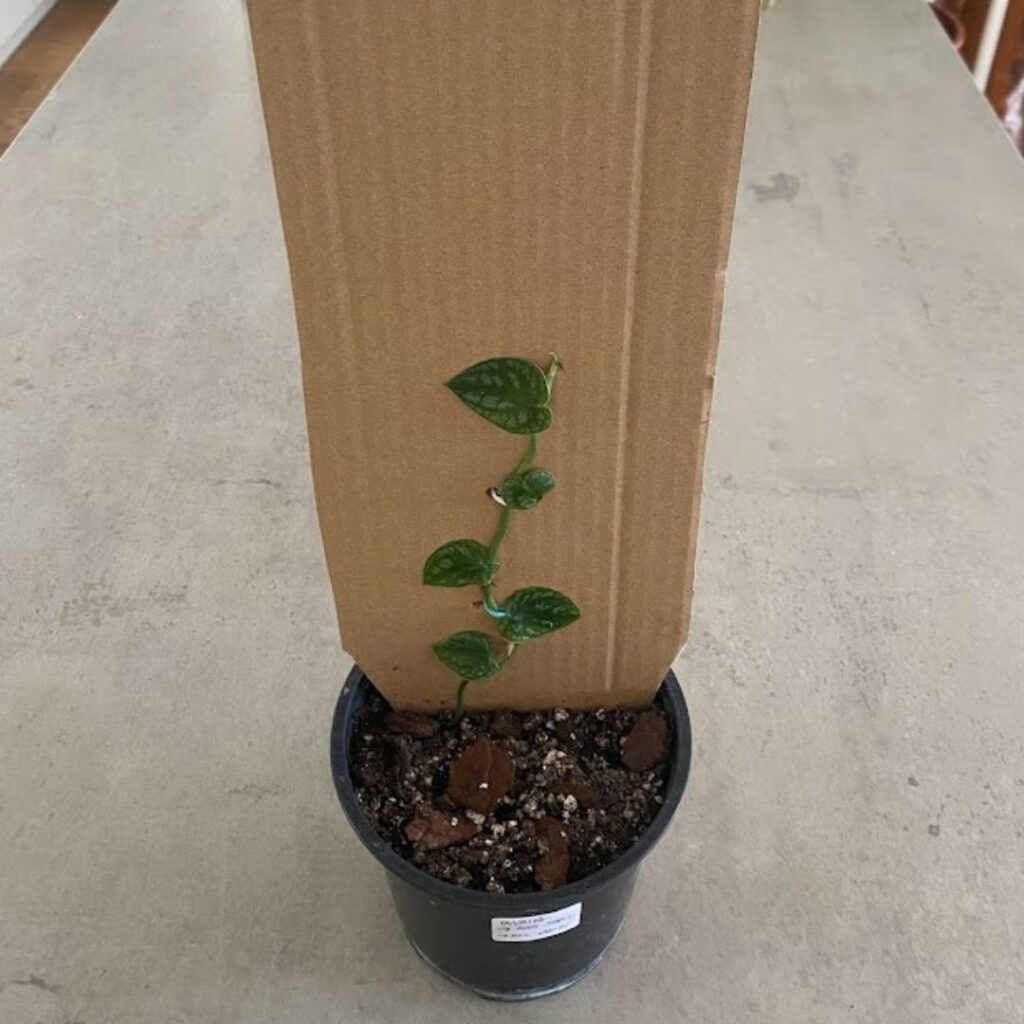
Fertilizer
Use a balanced feed once a month in summer. It is not essential but it can encourage growth.
Monstera Dubia Soil
Use a well draining, rich soil with some added perlite. They want a rich soil that drains well to encourage growth while preventing water logging.
For more on buying or making your own soil, see our guide here: Monstera Soil.
Tip: give it a plank of wood to climb to encourage good, large, climbing leaves. You can tie it on gently when mounting until the plant suckers on to the wood naturally.
Mature Monstera Dubia
Just a real quick interlude, but you need to see this! The dubias that are sold in shops are mainly all young plants, the ones that climb up wood and moss poles, but the mature plants are an altogether different beast! Once the plant becomes mature in the wild the leaves split like monstera deliciosa leaves but a bit more gnarly looking and the plant looks totally different Here are 2 pictures of mature plants I found on Instagram, the one on the left that shows how they mature. They are immense! Sometimes you will see them sold as just cuttings of the mature plant, and they look like an evil twin of the deliciosa, see the image on the right.


When To Repot
Repot your monstera dubia when it becomes too big for it’s current pot and it’s roots grow out of the bottom. They are fairly fast growing roots so keep an eye on them.
Humidity
50% or more is ideal humidity for a monstera dubia. This means going just over normal household humidity, so mist them a few times week.
Temperature
Dubias will do well in the 18°C to 25°C (64-77°F) range, which is a normal household temperature.
How To Propagate Monstera Dubia
Monstera dubia are really easy to propagate, cut off a leaf form the main stem, but keep the node with it. You can do multiple cuttings if you like just make sure each leaf has the node with it, they are directly under the leaf so it is really easy with this plant. Then get a plastic tupper ware tub or takeout box and fill it with moist sphagnum moss, then put the leaves over the surface with the nodes down so they are touching the moss. You can push the leaves down a bit to makes sure the nodes are really in the moss as this will encourage quick rooting. Cover the box to keep it humid and put it somewhere with some indirect light but no direct sun. Open the lid every two days or so to avoid rot, and it should root soon. Once you see stems coming out then pot them up quickly into a new pot with wood or even carboard to climb on and this will encourage the bigger leaves to grow.
For more on propagating dubias see our guides here: Monstera Dubia Propagation In Moss and Monstera Dubia Propagation.
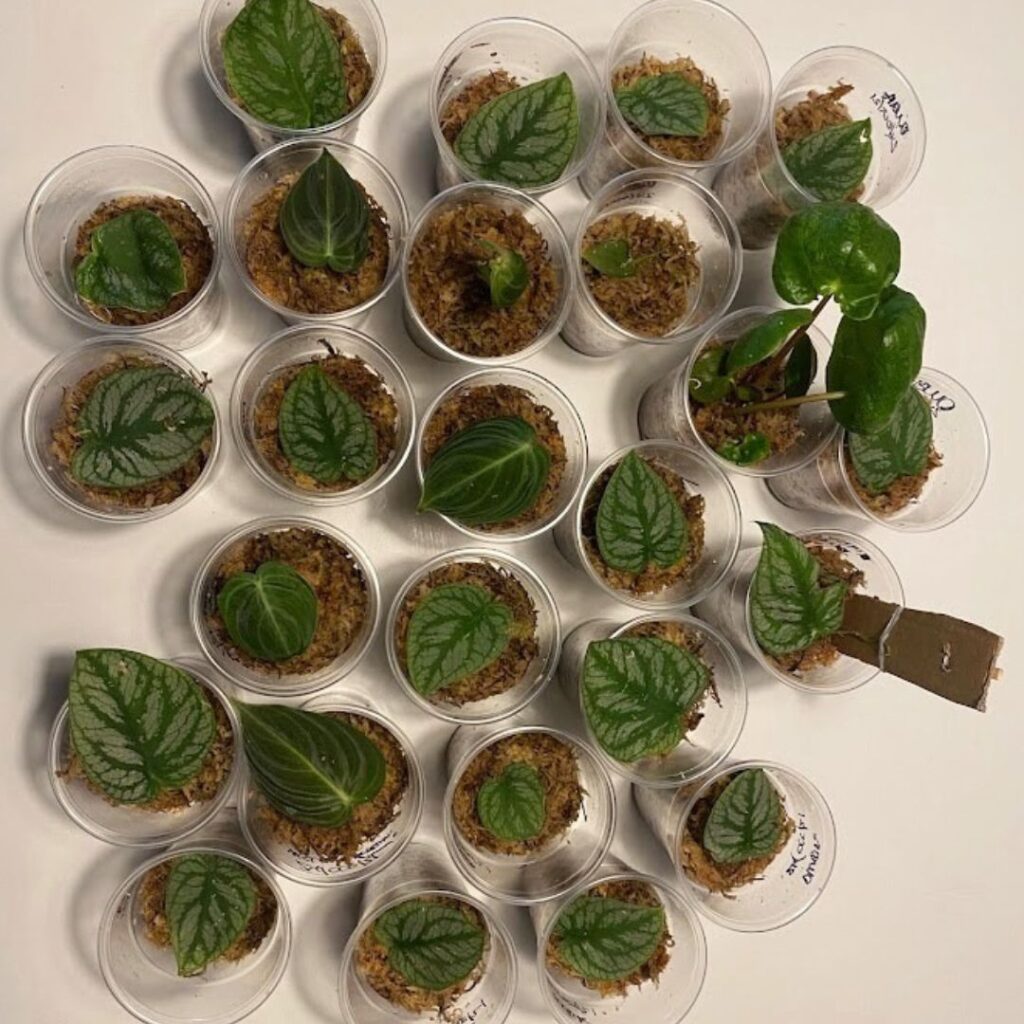
Monstera Dubia Vs Scindapsus
They are both green leaved plants with silvery splotches on them that vine. The scindapsus ca be easily told apart though as they do not climb up poles or wood symmetrically, but dubia do (or they put out really thin small leaved- runners so look nothing like the scindapsus).
Monstera Dubia USDA Zone
They can be grown outside in zones 9b-11.
Where To Buy
Try one of these Rare Plant Shops. Or Etsy.
Other Names
Shingle plant. The ‘shingle plants’ is a general term for plants that like to climb up wood or tree bark. The monstera dubia is probably the most famous, but there are other types too like the rhaphidophora, hayi for example.
For more on mounting dubias to wood or moss poles see our guide here: For more on propagating dubias see our guides here: Monstera Dubia Mounting.
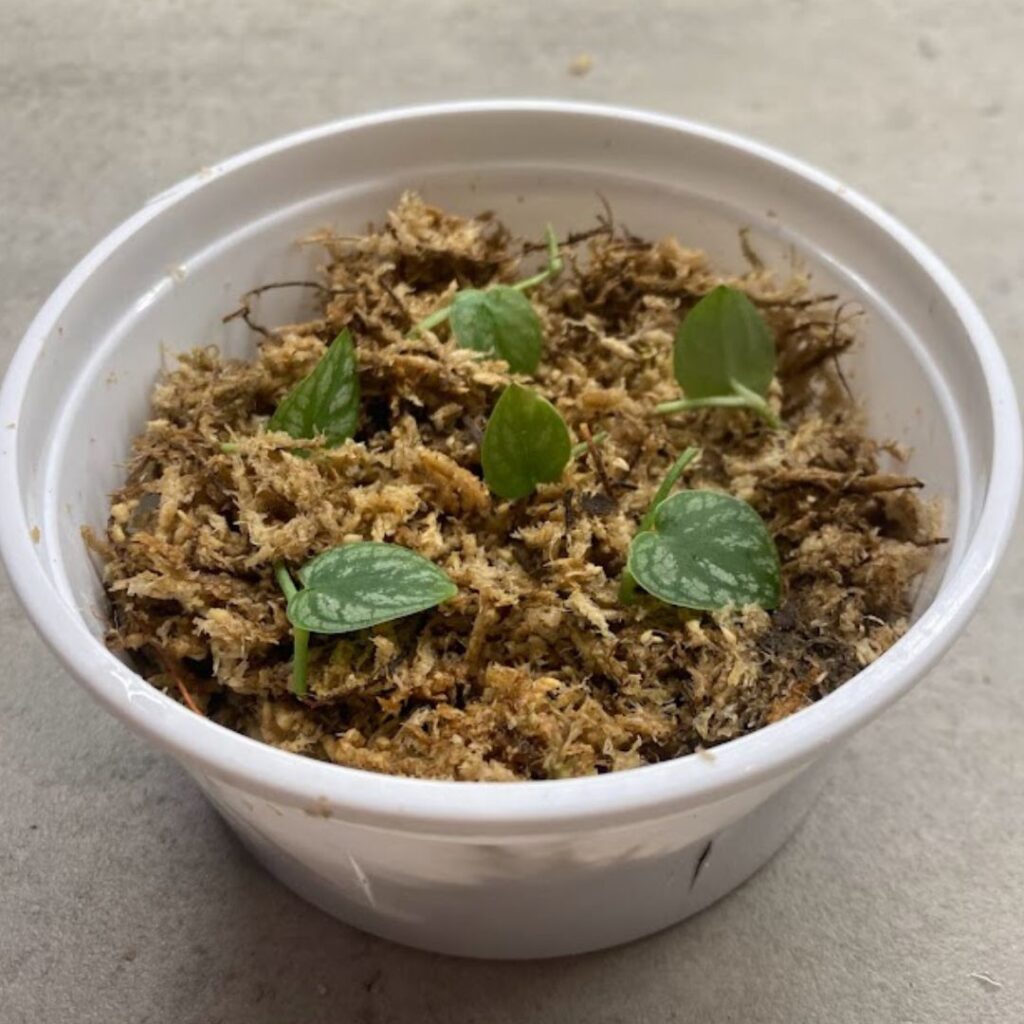
Monstera Dubia FAQs and Common Problems
Drooping and root rot are common problems from over watering and lack of drainage. They are easily remedied with a well draining potting medium containing perlite and only watering the soil when the top later is dry.
Also look out for pests on these plants as sometimes they can be susceptible to red spider mites and scales insects as well as other plants pests. We have a whole section on these pests here: Houseplant Pests and Problems.
They are toxic to cats if eaten, and can cause vomiting and numbness. So seek vets advice immediately if your pet eats any.
Monstera dubias is technically a hemiepiphyte, which means they can grow on the forest floor in the wild and them climb up trees where they can live as an epiphyte on the tree bark. The juvenile plants that are sold climbing on wood are ok to live in soil, but in the wild they climb up trees where they can live on the bark and grow much bigger and fenestrated leaves.
To mount a monstera dubia to wood, or even a moss pole, follow these steps:
The plant needs aerial roots to attach to a pole, so firstly take the plant off the plank or pole, and put the plant on a bed of wet soil or sphagnum moss for a couple of weeks and mist it a little each day. This will encourage it to grow aerial roots on each node. Then attach it to a pole or wood gently with twine to fix it in place. Mist it slightly each day and after a month you can take the twine off and the plant should be gripping to the wood / moss without the need for help. For more info on this see our guide: Monstera Dubia Mounting.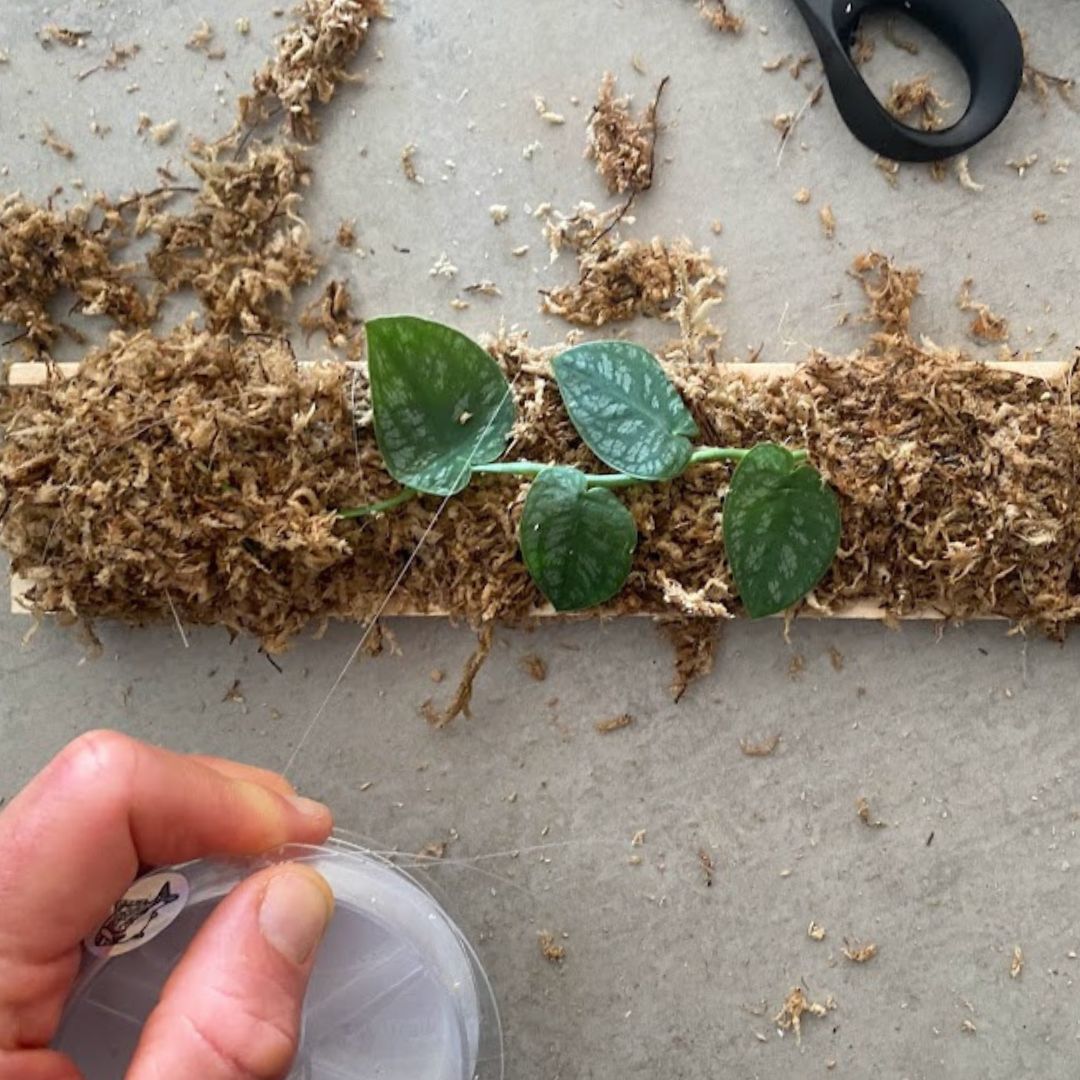
One question I get asked a lot is which is the best trellis. Personally I prefer the wood as it is much less likely to get moldy. The issue with moss is that it can get moldy sometimes but wood though is harder for the plant to grip to. If the wood is not rough enough for your plant to attach to, you can always sparsely wrap it in thin twine.
Monstera dubias need a moss pole or wooden plank to climb up ro the leaves will not grow, they will put out a thin shoot that will only grow small leaves until it finds and latches on to something like wood or moss.
Dubia grow really fast and will outgrow a normal moss poles in less than a year normally.
The monstera dubia and scindapsus plants are similar with silver on green leaves with similar patterning, but the dubia climbs symmetrically up a wood or moss pole, where as scindapsus ‘vines’ and needs support to climb.
The dubia and cryptantha are both shingling plants that climb up trees. the dubia has bigger leaves with some silvery patterning on them, but the cryptantha is smaller and has darker green leaves and some light green veining.
The hayi can be told easily from the dubia as it does not have nay silver on it’s leaves, but the dubia does. They both grow in similar ways when given a moss or wooden pole as support.
Other Articles You Might Like
Hope you like our guide to the Monstera Dubia. Check out our other rare monstera articles Monstera Thai Constellation, and Monstera Adansonii Variegated.
Please follow us on Instagram and Pinterest for regular plant updates and occasional plant giveaways.
